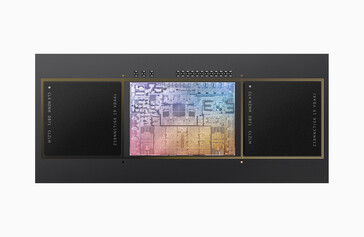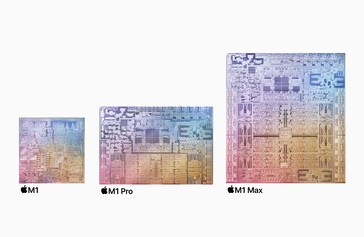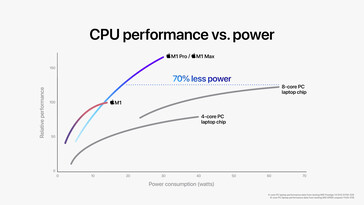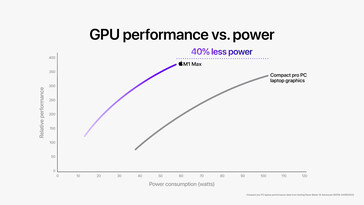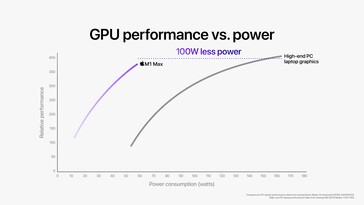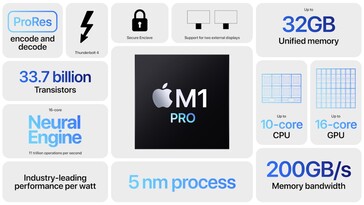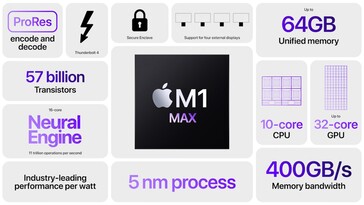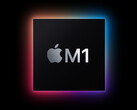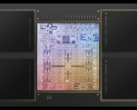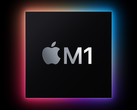As reported just on the eve of today's Apple Unleashed event, we finally see the Cupertino-giant announcing the successors to the much acclaimed M1 SoC — the M1 Pro and the M1 Max. The M1 Pro and the M1 Max are designed for pro-level tasks in the newly announced 14-inch and 16-inch MacBook Pro models with Apple claiming some serious performance benefits over contemporary x86 equivalents.
From a purely specifications perspective, the new M1 Pro and M1 Max based on a 5 nm process already offer interesting upgrades from the M1. The M1 Pro is the staple SoC found in the new 14-inch MacBook Pro and entry-level 16-inch MacBook Pros. It offers a total of 33.7 billion transistors, a 10-core CPU, and a 16-core GPU. The M1 Pro can offer up to 32 GB of unified memory and up to 200 GB/s memory bandwidth.
The M1 Max, on the other hand, will be offered as one of the default configuration options in the 16-inch MacBook Pro, which is also available in M1 Pro options. The M1 Max features 57 billion transistors and offers the same 10-core CPU as the M1 Pro. However, the GPU and memory get significant uplifts. The M1 Max features a 32-core GPU and up to 64 GB of unified memory with a 400 GB/s bandwidth.
M1 Pro: A more power-efficient alternative to the Core i7-11800H and RTX 3050 Ti
According to Apple, the M1 Pro is 70% than the original M1. The company also claims that the M1 Pro can offer 1.7x more CPU performance at the same power level compared to the "latest 8-core PC laptop chip", which in this case seems to be the Core i7-11800H powering the MSI GP66 Leopard. Apple also said that the M1 Pro can achieve the same peak performance as the Core i7-11800H by using 70% lesser power.
On the GPU front, Apple claims that the M1 Pro is 2x as fast as the M1 and 7x faster than the Xe UHD Graphics (32 EUs) found in the Core i7-11800H. The company also said that the M1 delivers more performance while using 70% lesser power compared to a "powerful discrete GPU for PC notebooks". The fine print referred to here is that of an Nvidia GeForce RTX 3050 Ti in a Lenovo Legion 5.
M1 Max: Graphics on par with an RTX 3080 Laptop GPU
With nearly 2x the GPU horsepower as the M1 Pro, the M1 Max is being pegged by Apple as the most powerful chip in a Pro notebook with dimensions to match. The M1 Max is quite a huge chip, almost 423.6 mm2, according to some rough estimates by Andreas Schilling.
Apple's abstract way of comparison is seen here as well with the company claiming that the M1 Max's GPU "delivers performance comparable to a high-end GPU in a compact pro PC laptop while consuming up to 40 percent less power, and performance similar to that of the highest-end GPU in the largest PC laptops while using up to 100 watts less power".
The compact pro PC here refers to the Razer Blade 15 Advanced with a Core i9-11900H and an RTX 3080 Laptop GPU while the high-end GPU part is a reference to the MSI GE76 Raider with a Core i9-11980HK and an RTX 3080 Laptop GPU.
While there's no mention of exactly which tests were run for comparison, we do get an idea from the graphs that the M1 Max's GPU is at least as powerful as a 105 W RTX 3080.
The M1 Max also has double the memory bandwidth of the M1 Pro at 400 GB/s, which should complement the GPU quite well. Apple has not spoken of any kind of gaming performance, though it did say that the new chips include dedicated components for ProRes acceleration that allows playing back of multiple 4K and 8K ProRes video with little power.
Other SoC components available in both the M1 Pro and M1 Max include a 16-core neural engine, an improved display engine for driving multiple displays, added Thunderbolt 4 controllers, an image signal processor for the new webcam, and Secure Enclave.





